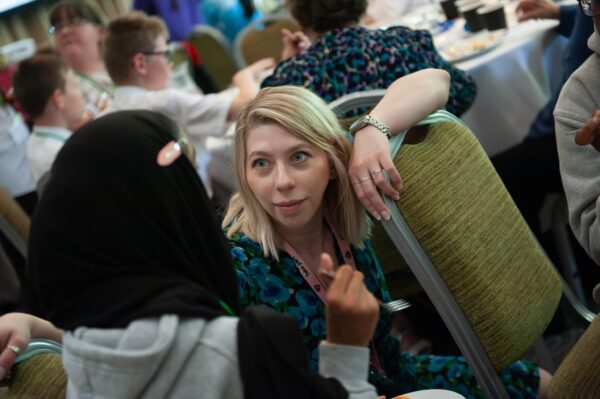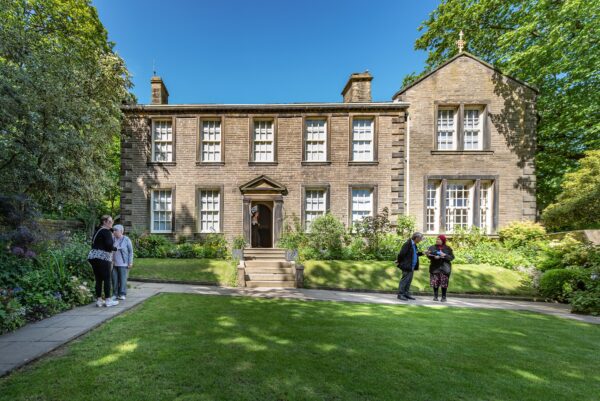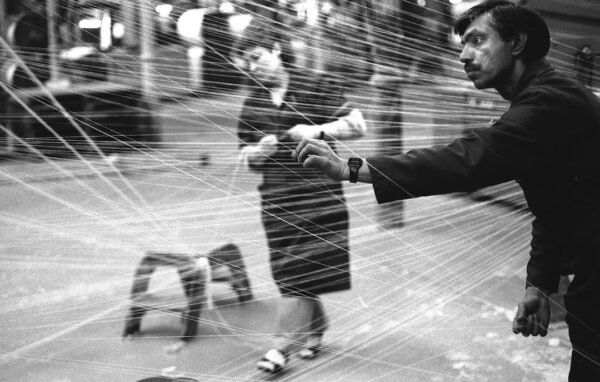
Local Stories for Learners: a conversation with Andra Chelcea
Find out how we're bringing hidden histories to life for educators and learners.
Published: November 6, 2025
Andra Chelcea is the Cultural Learning Manager at Bradford 2025. She spoke to us about the Local Stories for Learners activity packs – a set of Bradford Made resources that bring hidden histories and diverse voices into learning environments across Bradford District.
What is Local Stories for Learners?
It’s a new collection of activity packs designed to support educators bring Bradford’s rich heritage into their teaching practice in powerful, engaging ways. Each pack shares a real story from our district’s past – stories that haven’t always been included in textbooks or taught in classrooms.
They’re creative, inclusive and flexible enough to be used in any learning environment – from schools to home education and alternative provision settings.
For me, Local Stories for Learners is about helping every young person recognise that they are part of the story.
Why was this project important to Bradford 2025?
Bradford is bursting with local stories that deserve to be told. As UK City of Culture 2025, we have a unique opportunity to shine a light on those stories – especially the ones that have been overlooked or unheard.
These activity packs help us do just that. They celebrate the complexity, diversity and strength of our communities, and they give educators the tools to connect learners with the place they call home.
It is also part of our wider ambition to create lasting cultural learning resources that will live well beyond 2025 – something educators can return to again and again.
Explore the packs

A Spoonful of Sugar: Bradford’s Sweet Traditions
Learn about two significant Bradford migration histories through the stories of two families - and food!

Behind the Brontës: The Life of Nancy de Garrs
Uncover the life of Nancy de Garrs, the Brontë family Nanny and housekeeper.

Lost Mills: Working Lives in Bradford and Keighley’s Textile Mills
Explore the voices and experiences of Bradford and Keighley’s textile workers in the 1970s and 80s.
How did you develop the packs?
We worked closely with educators at every stage. From early scoping to testing drafts in real learning environments, their insight has shaped every decision.
We also collaborated with artists, writers, curators and community members to ensure the resources are accurate, authentic and inspiring. We wanted them to feel locally rooted and culturally relevant – because when learners discover that history isn’t something that happened to other people, but something they belong to, it changes how they see themselves and their city.
What themes do the packs explore?
A big range! The first ten packs cover working class history, women’s history, migration, food culture, racism, inclusion, activism, faith, sport, identity and community. And they do it through many different lenses – oral history, photography, music, artwork, personal testimony and more. The final five packs will be launched in January with a whole different set of themes.
It was really important to us that the collection felt varied and balanced. We want every educator to find something that resonates with their learners, whatever their age, setting or subject focus.
When and how will educators be able to use them?
The first ten activity packs are available to download for free on the Bradford Made Learning Resources webpage.
Each pack is ready to use, with flexible activities and high-quality resources like oral histories, original artworks and photographs. They’ve been designed to save time and reduce workload – especially for educators with limited planning capacity.
We know how stretched educators are, so every activity has been written to be adaptable – something that can be used as a quick 15-minute starter or expanded into a full scheme of work.
How do they support wider educational priorities?
They’re closely aligned with key inspection frameworks and guidance from Ofsted and Historic England. By focusing on local heritage and pride of place, the packs help schools embed cultural learning in a meaningful way – without adding extra pressure.
They also support personal development, cultural capital and SMSC learning, and offer rich, diverse perspectives that make the curriculum more inclusive. Ultimately, they offer a practical route for education settings to meet those priorities while doing something genuinely creative and exciting.
What impact do you hope these packs will have?
I hope they’ll spark curiosity, pride and connection. That learners will come away feeling more rooted in their city, more inspired by its people and stories.
And beyond 2025, I hope they leave a lasting legacy – one where local heritage is a central part of how we teach and learn in Bradford.
If these packs help even a handful of learners feel proud of where they come from – or inspire an educator to try something new – then they’ll have done their job. My hope is that, years from now, Bradford’s young people will still be learning through the stories that make this place extraordinary.

